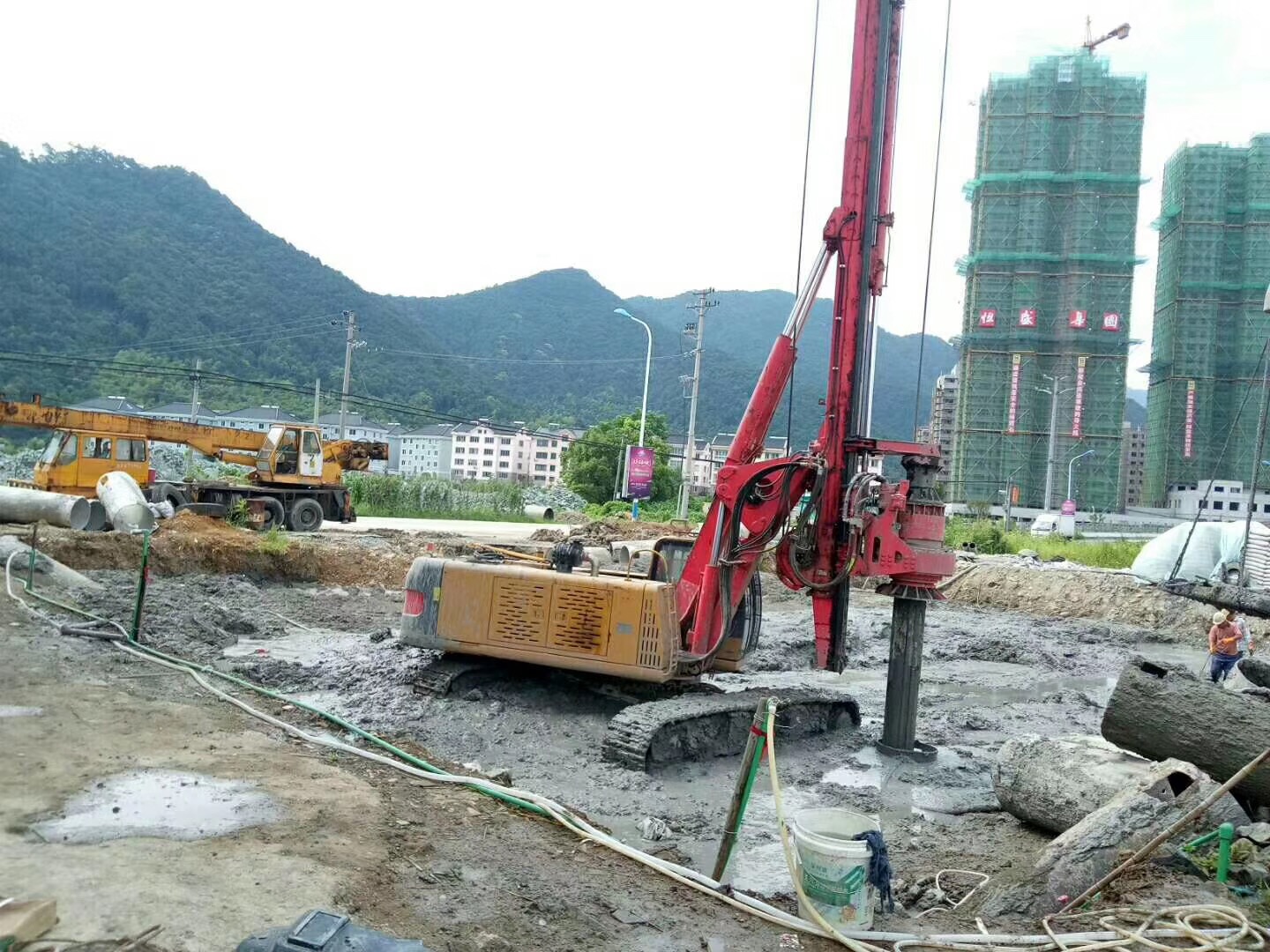The sediment at the bottom of rotary drilling and grouting piles may occur during multiple stages of construction, such as drilling holes, placing steel cages, and pouring concrete. Analysis suggests that the causes of sediment can be roughly divided into the following categories:
1.1 Collapse of pile hole wall
1.1.1 Cause analysis: Unstable collapse of the filling layer at the pile hole opening and collapse inside the hole;
Low mud density and poor suspension capacity;
Lifting the drilling tool too quickly creates an upward suction effect inside the hole;
The mud level in the hole dropped during drilling, and the mud in the hole was not replenished in a timely manner;
Lifting and scraping of drilling tools against the wall of the hole;
Lower the steel cage and scrape against the wall of the hole;
The concrete was not poured in a timely manner after the final hole was drilled, and the soaking time of the hole wall was too long.
1.1.2 Control measures: Install steel casing to protect the orifice, and extend the casing length appropriately according to the geological conditions;
Increase the mud density, increase the viscosity of the mud, and reduce sedimentation at the bottom of the hole;
Control the drilling depth of each round of rotary excavation, strictly prohibit the drilling barrel from being fully filled and lifting the drill, and avoid suction on the site;
Before raising the drilling tool, promptly replenish the mud in the hole and maintain the height of the mud liquid level;
When lifting and placing drilling tools, keep them aligned, lift and place slowly to prevent scraping and collision;
Lower the steel cage to maintain alignment and verticality;
Timely pour concrete into the pile body after the final hole is drilled to reduce auxiliary operation time.
1.2 Mud sedimentation
1.2.1 Root cause analysis
The mud performance parameters are not qualified, and the wall protection effect is not good;
The waiting time before infusion is too long, and the mud settles;
Mud has a high sand content.
1.2.2 Control Measures
Prepare mud with appropriate parameters and promptly test and adjust the mud performance;
Shorten the waiting time for infusion and avoid mud sedimentation;
Set up a mud settling tank or mud separator to separate the sediment and sand in the mud, and adjust the mud performance.
1.3 Drilling residue
1.3.1 Root cause analysis
Excessive deformation or wear of drilling tools at the bottom, resulting in soil leakage and the formation of sediment;
The drilling bottom structure itself is limited by factors such as the height and spacing of the drill teeth, which can result in excessive residual soil and sediment.
1.3.2 Control Measures
Select appropriate drilling tools and regularly inspect the bottom structure of the drill;
Reduce the gap between the rotating bottom and the fixed bottom;
Timely repair welding of the diameter protection strip and replacement of severely worn edge teeth;
Reasonably adjust the arrangement angle and spacing of drill teeth;
Increase the frequency of slag removal to reduce residual residue at the bottom of the pile.
1.4 Hole cleaning process
1.4.1 Cause Analysis
The suction effect during hole cleaning causes collapse of the hole;
The mud performance does not meet the standard during hole cleaning, and the sediment cannot be carried out from the bottom of the hole;
The selection of hole cleaning process is unreasonable, and the sediment cannot be completely removed.
1.4.2 Control Measures
Control the suction force of the pump during hole cleaning to reduce the impact on the hole wall;
Change the slurry during hole cleaning and adjust the performance indicators of the slurry;
Select a suitable secondary cleaning process based on the drilling situation.
Secondary cleaning technology for rotary drilling and grouting piles
During the construction process of rotary drilling, appropriate measures should be taken to avoid the generation of sediment. After the placement of steel cages and pouring conduits, suitable secondary cleaning processes should be selected for pile holes with excessive sediment for sediment treatment.
Secondary hole cleaning is a key process of using the pouring conduit to remove sediment at the bottom of the hole after completing the rotary drilling, inserting the steel cage, and pouring the conduit.
The reasonable selection of the secondary cleaning process for pile holes is extremely important for removing sediment at the bottom of the hole and ensuring the quality of the pile body engineering.
At present, the secondary cleaning technology of rotary drilling pile holes in the industry can be divided into the following three categories according to the mud circulation method: mud positive circulation cleaning, reverse circulation cleaning, and drilling tool no mud circulation cleaning.
Post time: Feb-19-2025

